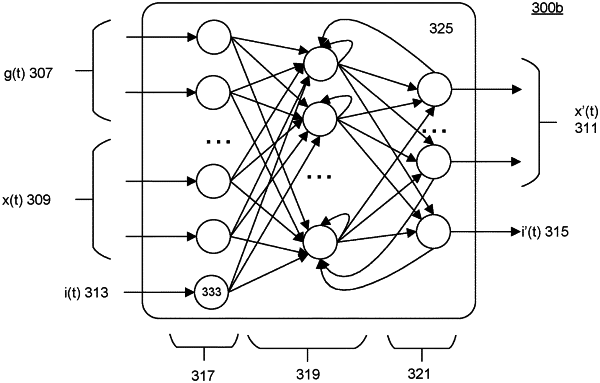| CPC G06N 3/084 (2013.01) [G06F 30/00 (2020.01); G06N 3/048 (2023.01)] | 18 Claims |

|
17. A system, comprising:
a memory storing instructions;
one or more processors coupled to the memory, the one or more processors executing the instructions from the memory, the one or more processors configured to perform a method comprising:
obtaining input data and output data of a physical system, the input data representing a dynamic input excitation to the physical system over a period of time, and the output data representing a dynamic output response of the physical system to the dynamic input excitation over the period time, the output data generated based on the input data over the period of time using a model of the physical system;
training a computing structure with a plurality of input units and one or more output units, the plurality of input units including regular input units to receive the input data and the output data, the output units including one or more regular output units to predict a dynamic rate of change of the input data over the period of time, the computing structure including a neural network with the regular input units and the one or more regular output units, wherein the training the computing structure comprises:
configuring the computing structure with the plurality of input units and the one or more output units, the computing structure configured to update the neural network with a free input unit added as an input unit in addition to the regular input units, the free input unit not configured to receive the input data or the output data, the computing structure configured to update the neural network with a free output unit as an output unit in addition to the one or more regular output units, the free input unit to provide a time varied data and a dynamic rate of change of the time varied data during the periods of time,
generating a predicted dynamic rate of change of the input data over the period of time based on the computing structure, the input data and the output data, and
comparing the dynamic rate of change of the input data and the predicted dynamic rate of change of the input data over the period of time, the comparison to obtain a prediction residual indicating an accuracy of the predicted dynamic rate of change of the input data based on an accuracy threshold; and
generating a simulation object for the physical system, the simulation object including the trained computing structure to determine future output data of the physical system in real time.
|